To use a tea kettle properly is one of those skills which is vital to tea-making. Unfortunately, only a few tea-lovers take time to master this important skill.
In the current climate of the world today, people are increasingly fulfilling their everyday demands right inside the home. Moreover, it’s often said that all you need to commence your tea-making journey is a cup and a kettle.
The techniques are countless from spanning from the gongfu tea ceremony to leaves in a bowl. Whether a novice or veteran in the art of herbal immersion, we offer enlightening tips to mastering a worthy brew.
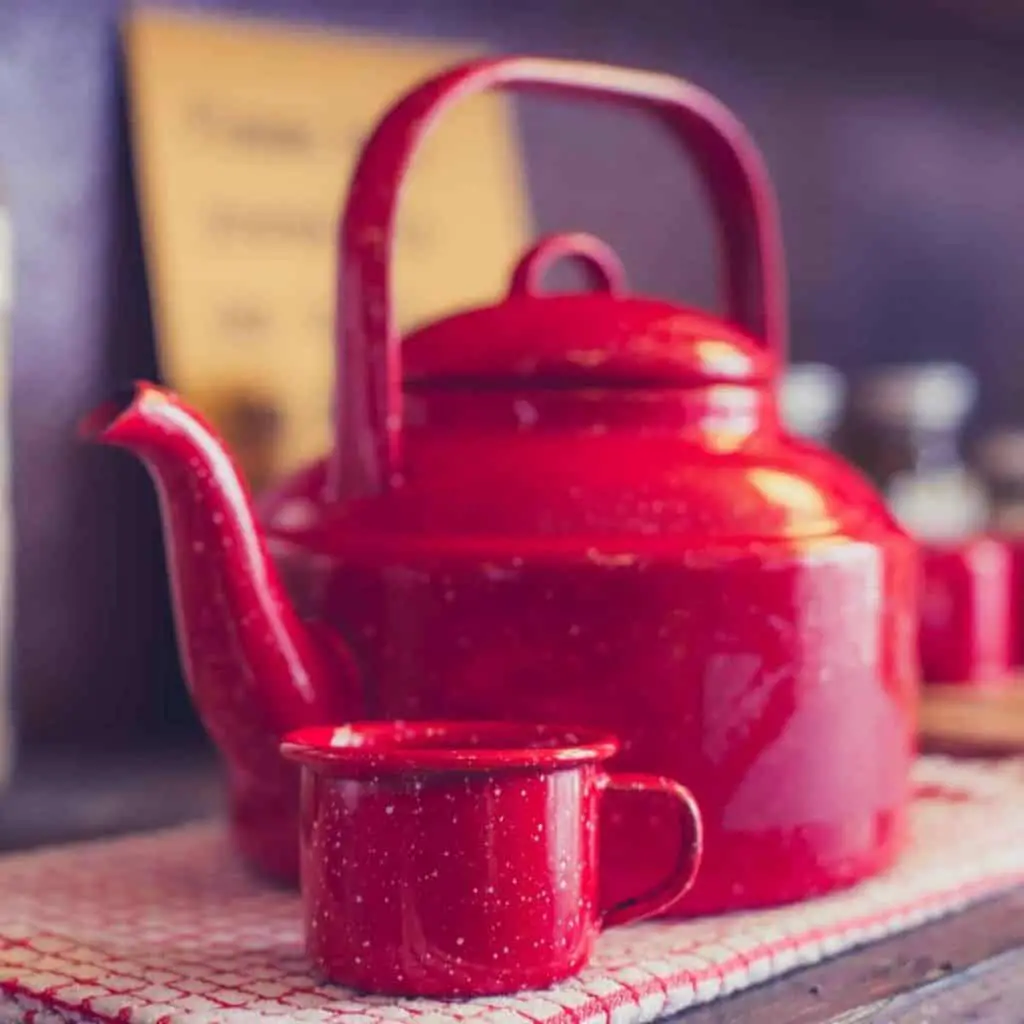
Jump to:
Types of Kettle
Different tea kettles hold various features for producing tea. In addition, there are many methods to brew an exemplary cup.
With specific techniques, you will need to use one that best suits your infusion style. Therefore, we recommend reviewing this universal list of the most common kettle types and their key components:
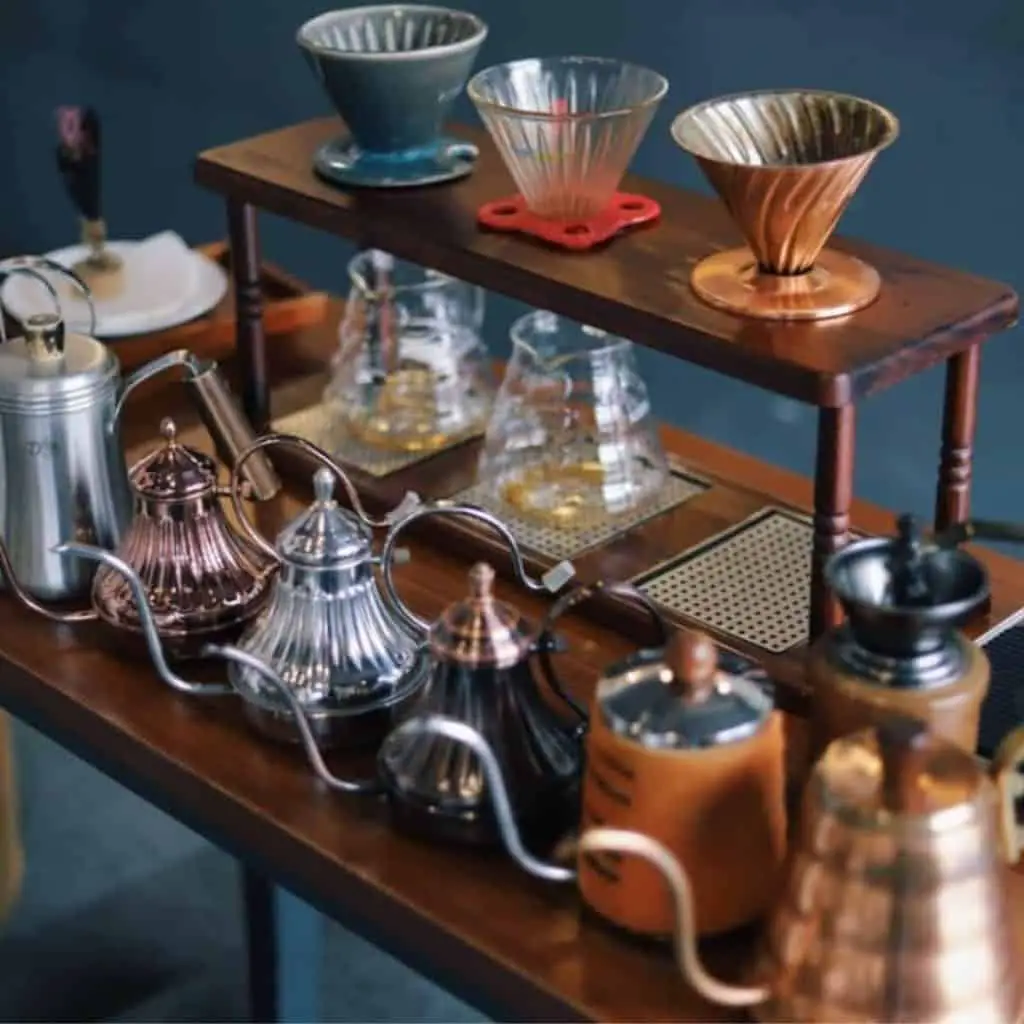
Cast Iron Type
A resilient brewing pot that endures extreme temperatures and uniformly heats your tea. The cast iron maintains heat for an extended period after removing it from heat.
Stainless Steel Type
A popular type due to its long-lasting durability and minimal upkeep. The stainless steel interior will not affect the water’s taste.
Stovetop Type
Constructed with a flat bottom, the stovetop kettle is ideal for brewing tea directly on your electric or gas burner. Moreover, this type is incredibly difficult to damage. They perform impressively even with a few nicks and notches.
Gooseneck Type
The long and narrow spout allows for more precise pouring. If cascading your tea over a cup or bowl is mandatory, then the gooseneck prevents aggravating spillage.
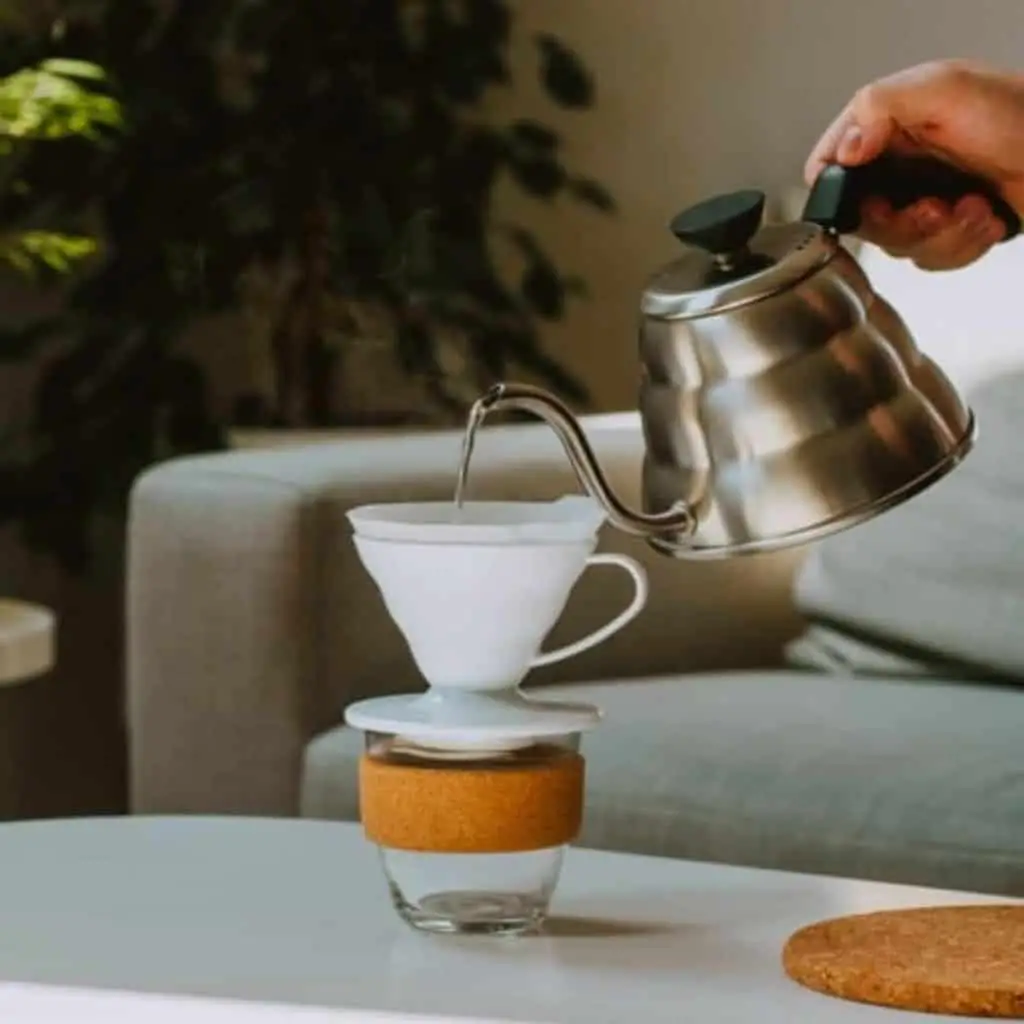
Electric Type
The most common type, the electric version, is automatic, requiring very little skill. There is also no need for a stovetop.
Smart Type
This water heater can be programmed manually and operated through your handheld device. Therefore, you can set a daily routine through your smartphone, keeping you from waking up early to boil water.
Whistling Type
Producing a high-pitched sound, the whistling tea kettle alerts you when your hot beverage is ready. This type is occasionally linked to the stovetop version.
How to Use an Electric Kettle
You just decided to purchase your first electric kettle! Here’s a simple set of steps on how to use it:
- First, fill it with water. Some display a maximum fill line for your convenience.
- Place it on the base included, keeping it from burning kitchen surfaces.
- Press the button that turns the device on. Depending on the brand and model acquired, you may need to plug it into a power source.
- Patiently wait 2-4 minutes while the water boils. Most electric types will automatically turn off once the boiling is complete.
- Pour the hot water from the kettle into a cup. You can choose to place the tea herbs in your cup before or after pouring the hot water. It’s a matter of personal preference.
How to Use a Stovetop
Using a stovetop for your whistling kettle is fortunately straightforward. Take a look at this brief guide on how to work your stovetop while you use a tea kettle:
- Begin by filling it with some water.
- Set your water-bearing kettle on the stove.
- Firmly place the lid over the opening or mouth of the kettle. Your lid should have a tight fit, preventing any steam from escaping.
- Turn your stove dial to high, allowing the water to boil.
- Depending on the size of the device, it could take 10-15 minutes before the pot starts whistling.
- Once you hear that sharp whistle, grasp the handle and remove it from the hot eye. Some offer a heat-resistant handle but make sure to carefully read any labelling that could state otherwise.
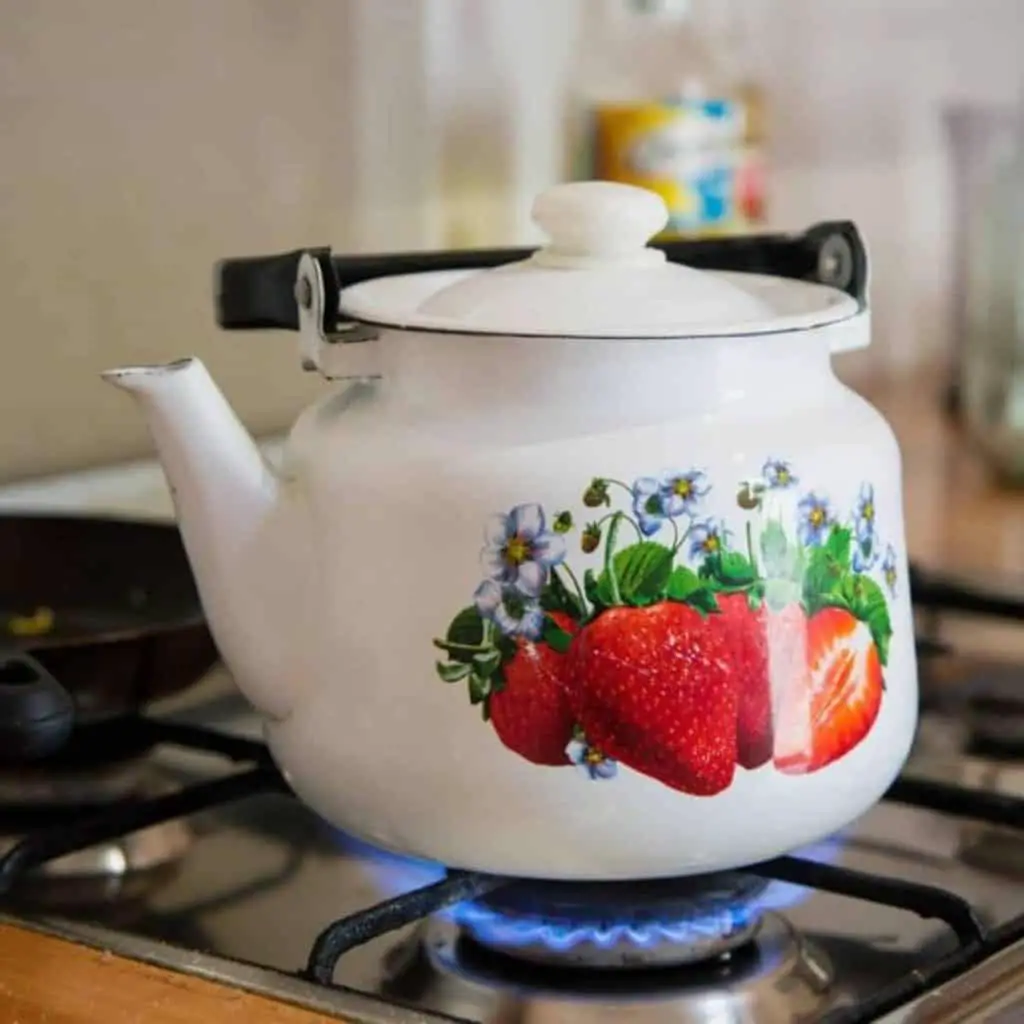
Common Uses
While this kitchen equipment is endlessly useful, here are the most common ways you might use a tea kettle:
- Brewing a cup of tea or coffee.
- Adding hot water to various meals.
- Heating milk for frothing.
- Boiling water for instant noodles.
Loose Tea
How would you use a kettle for loose tea? Brewing a pot of loose leaf tea is almost painless. You probably already have your loose leaf of choice as well as your kettle.
Next, you should purchase tea filter bags or an infuser to combine your hot water and leaves. These items provide a barrier between the herbs and the water. Most people don’t prefer stray leaf particles in their beverages.
Stick your leaves in your filter bag or infuser and place them into the kettle of hot water. If you plan to enjoy white, green, or oolong tea, the ideal water temperature is 180°F or 82°C. However, for anyone desiring to use a kettle for black, herbal, or fruit tea, the optimal temperature is 210°F or 98°C.
Tea Bags
The most popular way to use a kettle is with tea bags. Once you grab the device in your kitchen, fill it with hot water. You can add your teabag before or after pouring the heated water into your cup.
Steeping can vary depending on how strong you want your drink to taste. Some tea drinkers even use several bags at a time, leaving them in the cup while consuming the beverage.
The water temperatures will be fairly identical to brewing with loose leaves.
Tea Kettle with Infuser
If you favour loose leaf tea, then buying one with a built-in infuser is a smart investment. A kettle with an infuser is very similar to a regular version. The key difference is that this specific type provides an attachment to better immerse the leaves and hot water. It also acts as a holder for your tea rather than a water heater.
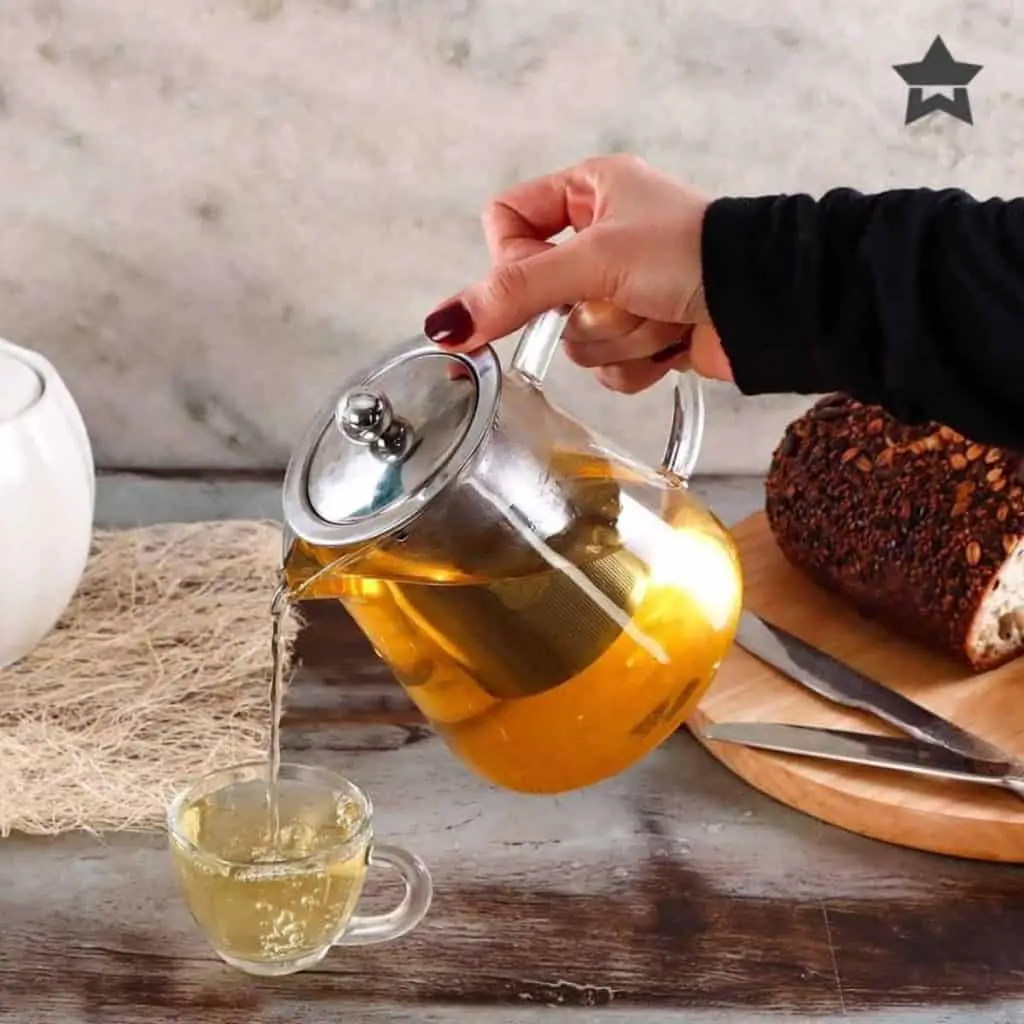
Consider this comprehensive guide on how to use a tea kettle with an infuser:
- Fill your separate kettle with water, boiling it.
- Then, place your loose tea leaves in the infuser. Some infusers included on kettles are removable.
- Put your infuser back over its teapot if it’s detachable.
- Next, pour the hot water from your separate kettle over the leaf-filled infuser.
- Allow all the hot water to pass through the infuser into the teapot.
- Pour the newly-infused tea into a mug of your choice and enjoy.
Creative Uses
Tea and coffee aren’t the only usages for this brewing device. Read over some of the more unconventional but innovative ways you can use it:
- Heating any soup you desire.
- Brewing hot water for instant oatmeal or cream of wheat.
- Making a cup of hot cocoa.
- Heating milk for a baby bottle.
- Warming up water to use as a personal face steamer.
Make Pasta
People habitually use a tea kettle to boil water for their ramen, but what about regular pasta? It’s a lot easier than you might think!
Using an electric kettle will be the simplest for this task. After you fill it like you normally would add a handful or two of pasta. The amount of pasta you add will vary depending on the device’s capacity.
Proceed by turning it on to let the water heat up and soften the pasta. You don’t want to check on your pasta too frequently because more steam could escape. However, be sure to keep a close eye on your kettle, so the water doesn’t boil over. This entire process may take up to five boils.
Once your pasta softens, drain the water. You now have a kettle full of cooked pasta!
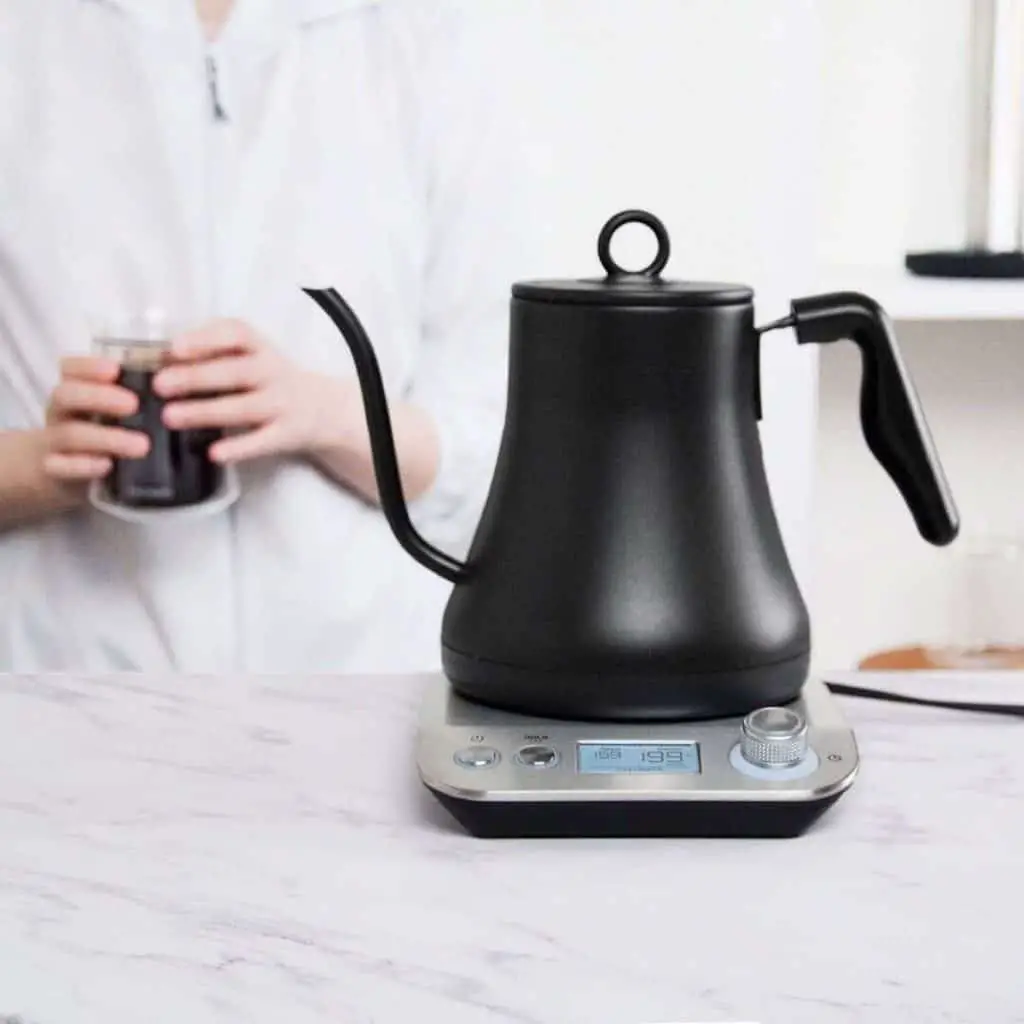
Boil Eggs
If you’re in a pinch and need a quick breakfast or snack, use a tea kettle to boil eggs! Here’s how to boil an egg in your electric device.
Add as many eggs as desired without overfilling the device or breaking any. Then, fill it with approximately one litre of water and switch it on. Once the eggs are boiled, transfer them with a pair of tongs into cold water.
If you prefer soft-boiled eggs, you will only need to do one round of boiling in the device. For hard-boiled egg lovers, three boils will suit you best. Each boil round takes about two minutes, so even hard-boiled eggs should take under ten minutes in total.
Make Rice
A rice cooker isn’t the only way to easily boil your rice. You can use a tea kettle to make rice in just a few minutes.
As always, start by filling your electric kettle with water and switching it on. It’s a good idea to rinse your rice while you wait for the water to heat up a bit. Once you finish washing your rice, add it to the kettle and allow the water to boil.
Like traditional rice cooking, there is no need to drain the water. The rice will soak the water up during the boiling process. This procedure may take several rounds of boiling, but once complete, spoon your rice into your preferred bowl or dish.
When you use a tea kettle for cooking rice, you may need to add more water through each boil.
Enjoy your fluffy, kettle-made rice!
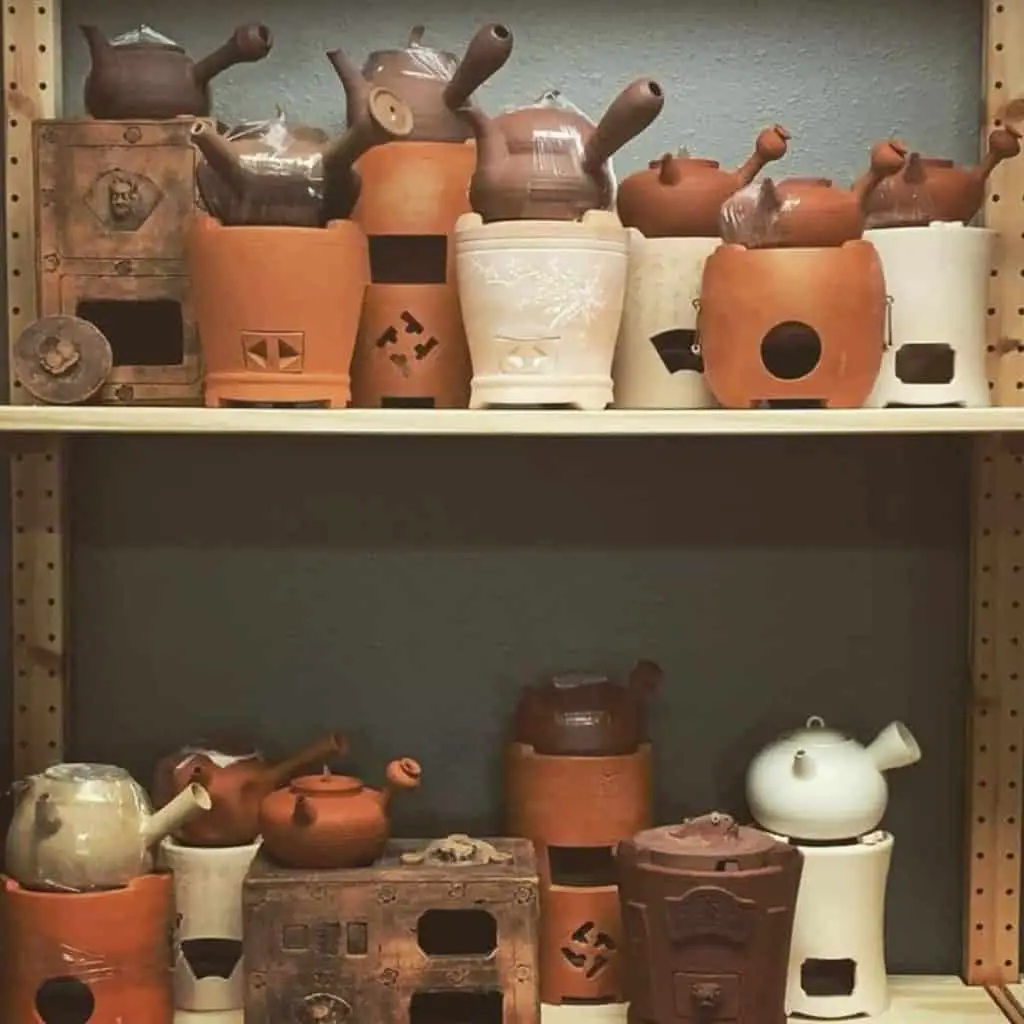
Final Thoughts
Now that you have a go-to guide on how to use a tea kettle, your kitchen tasks will be effortless. The more you become acquainted with your new essential appliance, the better your skills will evolve.
Your preference could range from iced milk teas to hot herbal beverages. Regardless, you hold the ultimate tool to a successful tea-brewing pursuit.

